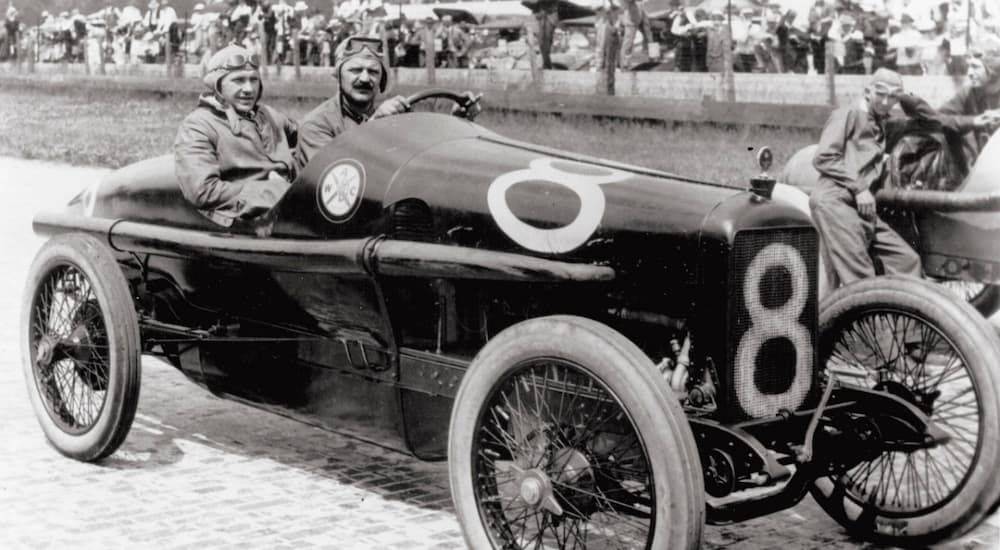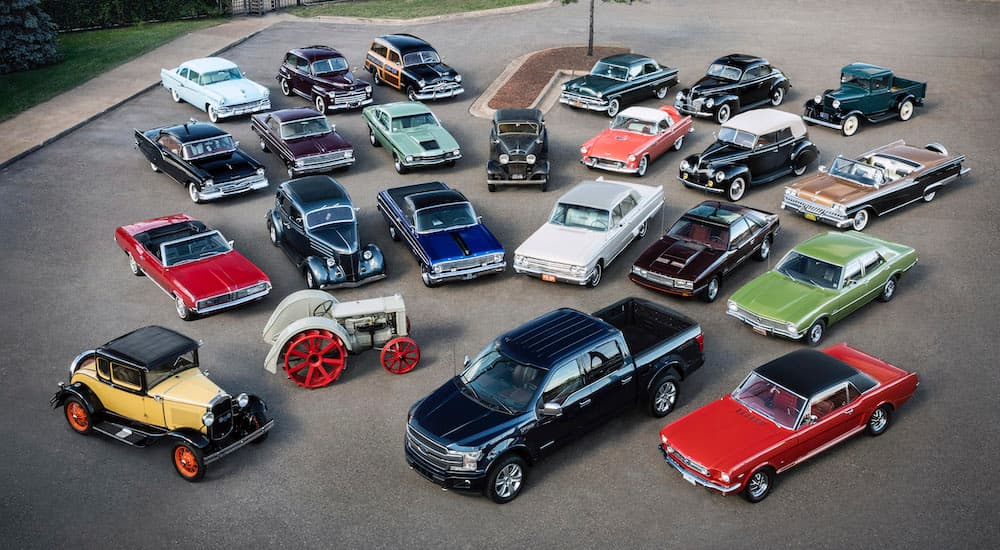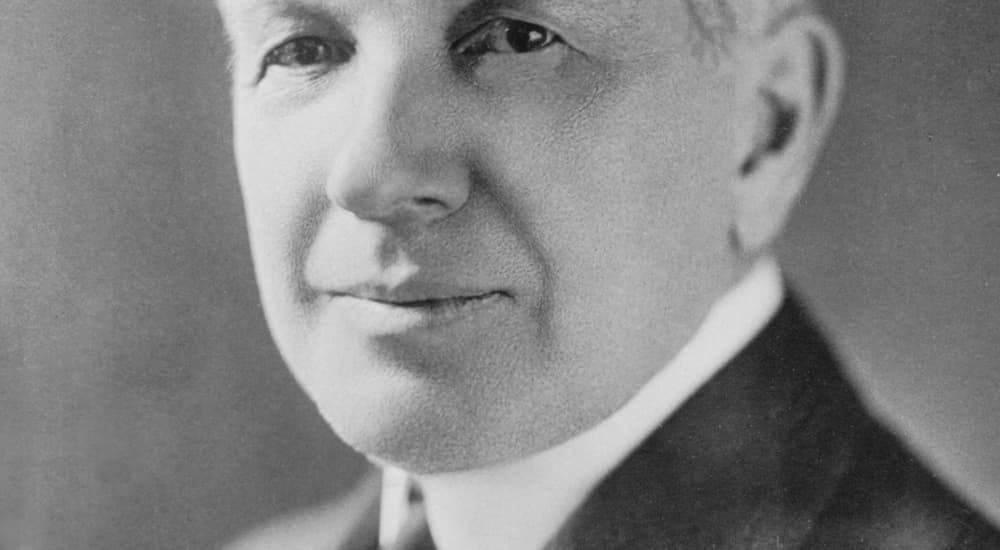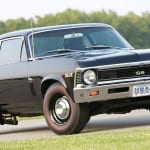Ever since the rise of marketing and advertising, brand names have become vitally important: a tremendous amount of time and money now goes into picking the name of a company or new product. That hasn’t always been the case, however, and many of the companies that we know are named after a person rather than through extensive market research and focus-group testing. As you drive past a Chevrolet dealer, you might not think too much about the name; after all, it’s a company that’s been here all of our lives. But the story behind the name, and the man it came from, are both quite remarkable.
Louis Chevrolet – Early Years
Our story begins on Christmas Day, more than 140 years ago. Louis Chevrolet was born in La Chaux-de-Fonds, in the Neuchâtel canton of Switzerland, on December 25th, 1878. He was the second of seven children, including his younger brothers Arthur and Gaston, both of whom would eventually join him in the auto industry. When he was eight years old, Chevrolet’s family moved to the city of Beaune in France, and it was there that young Louis began to learn his mechanical skills.
In 1895, at the age of 17, Chevrolet began working for a company where he started repairing bicycles and carriages. One story from this time says that while in the workshop of the company, he was called upon to repair the vehicle of a guest staying at a nearby hotel. According to legend, the guest was a wealthy member of the Vanderbilt family, and working on the vehicle sparked Chevrolet’s love of automobiles. Whether this is true or not, at some point during this time, he certainly acquired an interest in cars – he also enjoyed bicycle racing during these years – and began saving money to travel to America.
Rather than heading directly to the United States, Louis Chevrolet moved to French-speaking Montreal, Canada, in 1900, kicking off the new century in the New World. His stay in Canada was brief, but during that time, he worked as a driver and a mechanic, using the knowledge he had gained from workshops in France. The next year, he moved from Canada down to New York and got a job at an engineering workshop.

Breaking Into the Auto Industry
In 1901, Chevrolet started working in a shop in Brooklyn for a French car company called De Dion-Bouton. Throughout the years that followed, he continued to develop his skills as a race car driver and his passion for the growing auto industry. By 1905, he was entering major races driving a Fiat – that year, he won the “Three Miles” and set a new speed record for a one-mile run, beating renowned American driver Barney Oldfield. Although it seems slow today, his time for a measured mile was 52.8 seconds, and it made an immediate impression on racing fans.
Following this initial success, Chevrolet swapped his Fiat for a Buick and continued to race competitively in the years that followed. While driving for Buick, he met and befriended a man named William C. Durant, owner of Buick and founder of General Motors. That connection would result in a partnership that changed the auto industry forever, leaving the name of “Chevrolet” as an enduring mark on the 20th century and beyond.
The Other Guy: William C. Durant
Although the company is named “Chevrolet,” most people would argue that William C. Durant is just as important – perhaps more so – in forming the brand that we all know today. Durant was a businessman through and through; while he certainly had a passion for the auto industry, his interest was always in the business side of things. Durant got his start in 1886 when he partnered with a man named Josiah Dort to create the Durant-Dort Carriage Company, which became the leading manufacturer of horse-drawn vehicles in the US.
Durant was skeptical of the auto industry as it was getting off the ground and felt that the loud sounds of the engines and the smell of burning fuel would keep people away from them. As he saw public interest in these vehicles grow, along with concerns about safety and regulations on them, Durant felt there was an opportunity. Rather than watch someone else make horseless carriages that would ruin his business, he took the first step in creating his own company.
With the significant wealth he had made from his carriage company, Durant purchased the Buick Motor Company, which was struggling under financial debts and other problems. Applying what he had learned from making carriages to the fledgling auto industry, Durant turned Buick into the bestselling automobile company in the country. From there, Durant had a vision for something even larger: a massive automobile company operating numerous brands.
In 1908, he put this plan into action by founding General Motors and began buying car companies that were struggling or that he saw potential in. After a couple of years, however, his aggressive strategy had left him and GM overextended. In 1909, Durant had put together an $8-million deal to buy Ford, but the bank refused to back the deal, and in 1910 Durant was dismissed from his position at GM, the company he had created. This brings us to…
The Chevrolet Motor Car Company
Louis Chevrolet and Durant founded the Chevrolet Motor Car Company, along with Arthur Chevrolet and additional investing partners, in 1911. Considering their backgrounds, this might seem like the perfect partnership: Chevrolet had a passion for cars and performance, while Durant had a mind for finances and business. Unfortunately, rather than finding that their differences complimented each other, the two men clashed.
Chevrolet wanted the cars made by the company bearing his name to represent his passion for racing and performance. Durant wanted affordable vehicles for broad appeal, something that the everyman could afford and drive. It seems the idea of compromise was not something familiar to the two of them, and they found themselves at a divide that they could not cross. In 1914, unable to reach an accord regarding the direction their car company should take, Durant bought out Louis Chevrolet, and the eponymous founder of the company left it behind.
Durant proved to have an impressive vision for the company, however, and sales of the Chevrolet Series 490 were substantial. Using his initial profits, Durant was able to repurchase a controlling interest in General Motors and merged Chevrolet into GM as its own division. Chevrolet, the car company, helped create Durant’s initial vision for GM, which ultimately resulted in the GM we see today: a company that includes Chevy, GMC, Cadillac, and Buick.
Chevrolet after Chevrolet
The man who gave Chevrolet its name went on to found another car company in 1916: the Frontenac Motor Corporation, which he started with his brothers. Just as he had wanted from Chevy, they focused on racing parts for Ford and other brands, as well as making their own Frontenac race cars. That same year, he also took a position as vice president and chief engineer at American Motors Corporation (a different company than the later AMC), a car company in New Jersey.
During this time, Chevrolet focused not only on designing engines and building cars but on racing them. He placed 20th in the Indianapolis 500 in 1915, and in 1916 he raced alongside his brother, Gaston. Arthur Chevrolet competed in the Indianapolis two times, while Gaston won the race in 1920 while driving one of their Frontenac race cars. Sadly, in 1920, Gaston died during a crash while racing in Los Angeles; the impact of this tragedy was so severe that Louis Chevrolet never raced again.
Chevrolet went on to launch an aircraft engine company with his brother Arthur, but he could not get it profitable before the Wall Street Crash of 1929 and the Great Depression that followed. This proved catastrophic for Chevrolet and ruined him financially, and so he returned to the company that bore his name. No longer a leader within the company, Louis Chevrolet ended his days working as a mechanic in the Chevy factory in Detroit.
He suffered a stroke in 1934 and ultimately died from a heart attack on June 6th, 1941, at the age of 63. A memorial to him was installed at the Indianapolis Motor Speedway Museum in 1975, featuring a bronze bust of Louis Chevrolet wearing a racing cap and goggles, looking ahead to his next race. Although he has been forgotten by many, Chevrolet’s legacy lives on through his name and the legendary accomplishments that helped build the auto industry.





